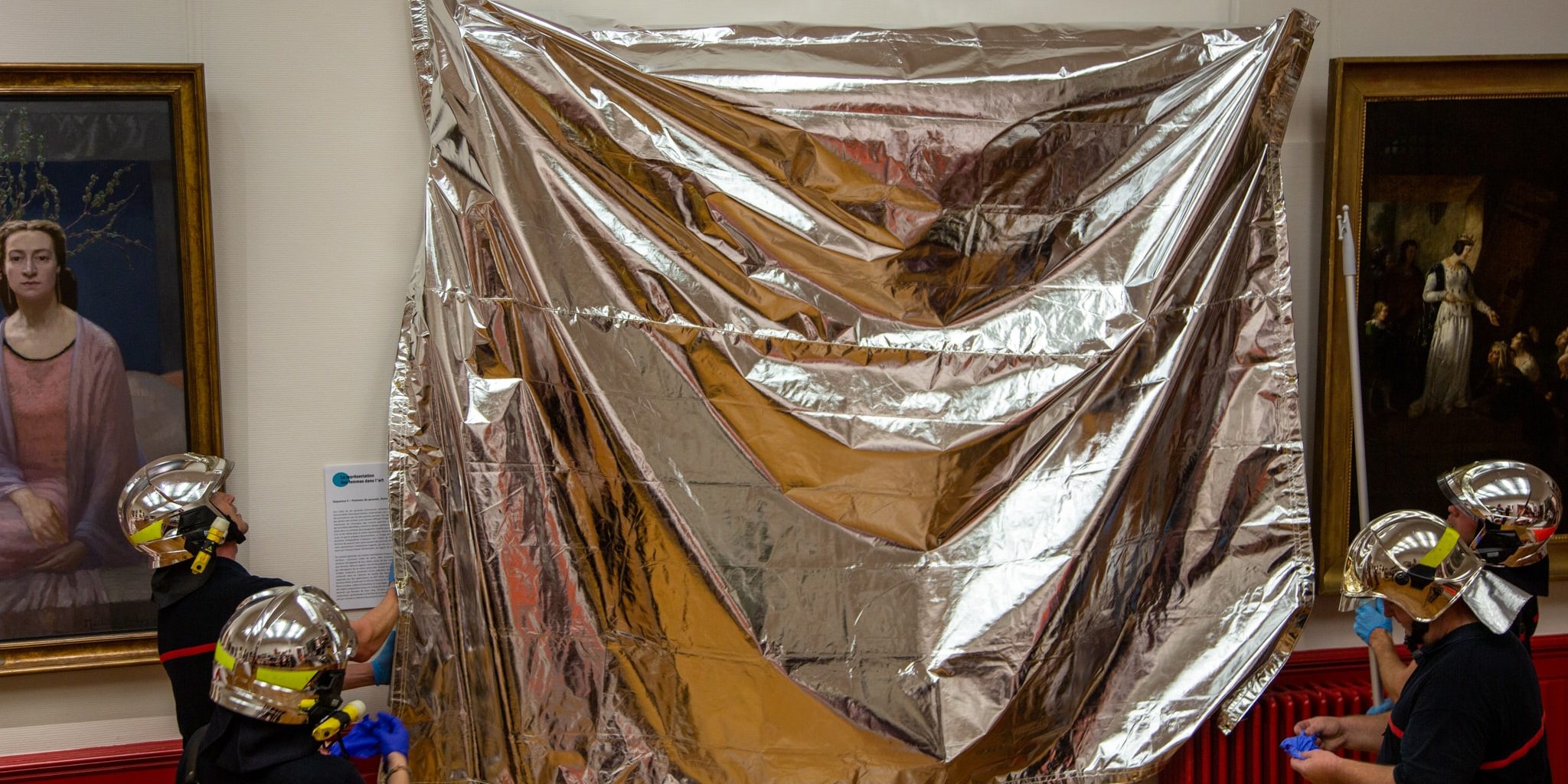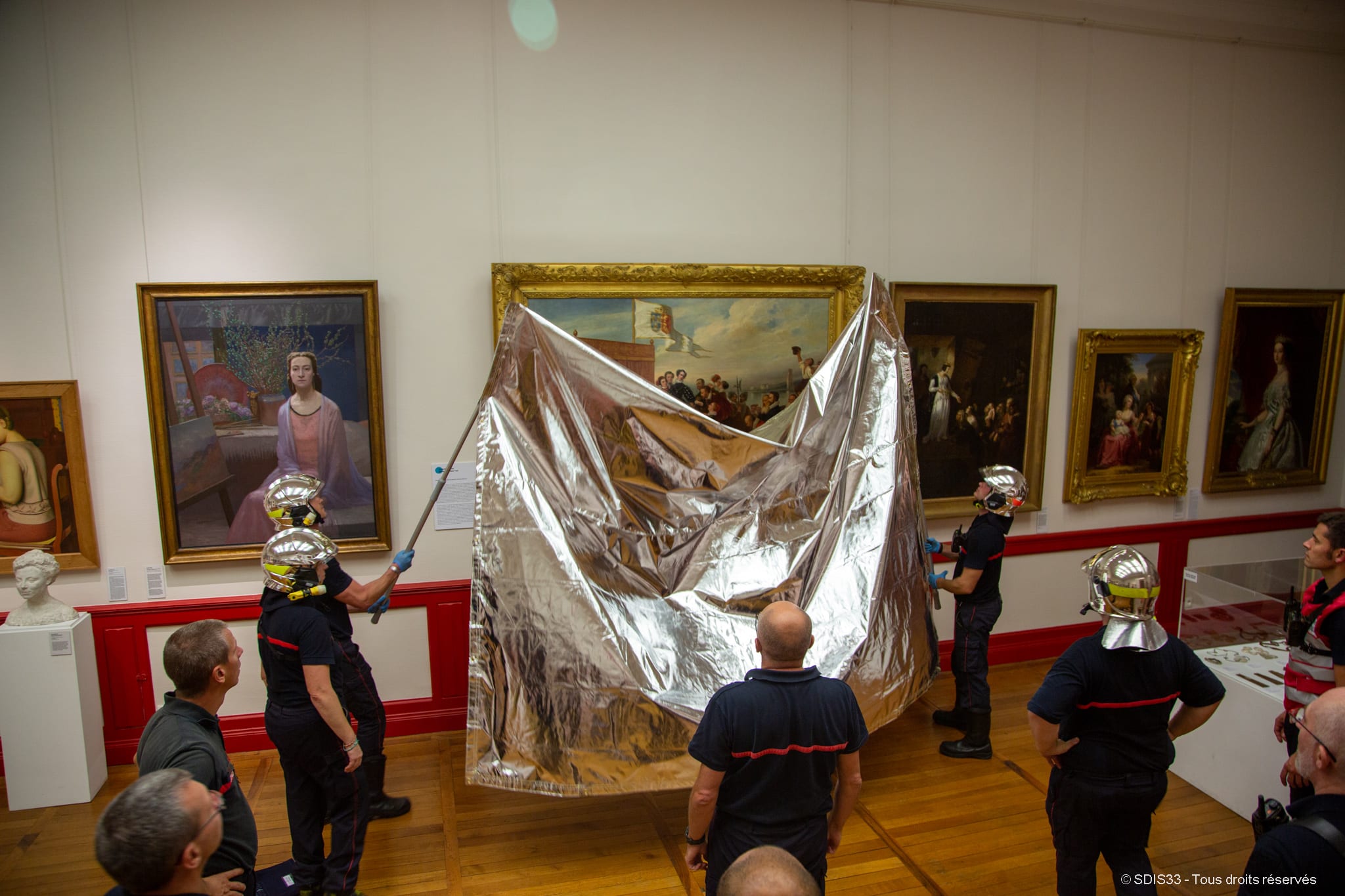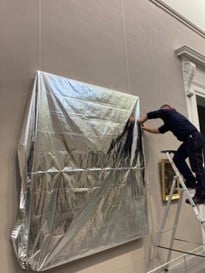The Increasing Frequency of Forest Fires Recent heat waves have caused fires to break out…

What You Need To Know About Artwork Insurance
If you’re a collector or an art curator, chances are you’ve thought about artwork insurance at some point. But what is artwork insurance? Does art insurance coverage matter?
Here’s everything you need to know about artwork insurance.
What is Artwork Insurance and How Does It Work?
Artwork insurance is a type of insurance that covers paintings, sculptures, and other valuable pieces of art if they are damaged, destroyed, or stolen. This coverage can protect you from financial losses if your artwork is damaged or destroyed in a fire, flood, or other natural disasters. It can also help to reimburse you for the value of your artwork if it is stolen.
A fine art insurance policy works in much the same way as other types of insurance policies. You pay premiums to an insurer in exchange for protection against certain risks. If something happens to your artwork, you can claim with your insurer to receive compensation for the damages.
Different Kinds of Artwork Insurance

Part of learning how to insure artwork is finding out the type of policy you need. There are three main types of artwork insurance policies:
- All-risk policies
The first and most comprehensive type of coverage is all-risk insurance. These provide coverage for any type of damage or destruction except for those specifically excluded in the policy (such as war or nuclear accidents). For example, most all-risk policies will not cover damage caused by vermin or mold. Make sure to read your policy carefully to understand what is and is not covered.
- Named-peril policies
These only cover damages caused by specific risks named in the policy (such as fire or theft). For example, a named peril policy might cover fire, theft, and vandalism but would not cover water damage. The downside to this type of coverage is that it may not cover all the risks you are concerned about. The upside is that it is usually less expensive than all-risk coverage.
- Scheduled policies
These provide coverage for a specific list of items that are individually insured for their full value (up to the limit stated in the policy).
From these three types of insurance, artwork and fine art insurance companies created more specific policies that cater to certain situations:
Builder’s Risk Coverage
The third type of coverage is builder’s risk insurance. This type of policy covers artwork during the construction or renovation process. For example, if you are having a new wing built onto your house to display your art collection, a builder’s risk insurance will protect the artwork during construction. Once the project is completed and the artwork is moved into the new space, you will need to purchase a different type of policy to insure it.
Fine Art Insurance
The first kind of artwork insurance is fine art insurance. Fine art insurance covers paintings, sculptures, and other pieces of art that are considered to be “fine” works. This type of insurance typically covers damage caused by fire, theft, or vandalism. It’s important to note that not all fine art policies are created equal; some policies will cover transportation costs if your artwork is damaged while being shipped, while others will not.
General Property Insurance
The second type of artwork insurance is general property insurance. This kind of policy is typically offered by homeowners’ insurance policies and covers damage caused by natural disasters like fires, floods, and earthquakes. General property insurance will also cover damage caused by theft, but it’s important to note that there is usually a limit on how much coverage is available for stolen items. As such, it’s generally advisable to purchase a separate policy if you’re worried about your artwork being stolen.
What Does Artwork Insurance Cover?

Generally speaking, artwork insurance will cover damage or loss to your collection due to things like fire, theft, vandalism, or accidents. Most policies will also cover loss of income if your collection is damaged or destroyed and you can no longer use it to generate income (such as through rentals or exhibitions).
Some policies will also cover forgery, which is when someone creates a fake work of art and tries to pass it off as the real thing. Forgery insurance can be especially important for high-value works of art where there is a risk of forgery.
It’s important to note that most artwork insurance policies will not cover damage that occurs gradually over time, such as water damage or fading due to sunlight exposure.
If you’re not sure whether your policy covers a particular type of damage, be sure to contact your insurance agent and ask.
FAQs on Artwork Insurance

Do I need artwork insurance?
Whether or not you need artwork insurance depends on a few factors. Firstly, consider the value of your artwork. If your art collection is worth tens of thousands of dollars, it may be worth considering insuring it. However, if your artwork is only worth a few hundred dollars, it may not be necessary to get insurance for it.
I already have homeowner’s insurance, do I still need artwork insurance?
Another factor to consider is whether or not your homeowner’s policy covers artwork. Some policies will provide limited coverage for paintings and other valuables, while others will exclude coverage for art altogether. Some artwork insurance policies can be purchased as an add-on to an existing homeowner’s or renter’s insurance policy, or as a standalone policy from a specialty insurance company. Be sure to check your policy documents to see what kind of coverage you have for your art collection.
How much does artwork insurance cost?
The cost of artwork insurance will vary depending on the value of your art collection and the amount of coverage you want to purchase. In general, you can expect to pay 1-2% of the actual cash value of your art collection per year in premiums. So, if your art collection is worth $100,000, you can expect to pay $1,000-$2,000 per year in premiums. Be sure to shop around and compare rates from different insurers before purchasing a policy so that you can find the best deal possible.
It is also important for collectors and curators to determine the current market value of their artworks before insuring them. The value of an artwork can fluctuate depending on a number of factors such as age, condition, and provenance. Working with a professional appraiser can help homeowners determine the accurate value of their pieces so that they can be properly insured.
Is artwork insurance worth it?
This is a difficult question to answer because it depends on a number of factors, including the value of your artwork and how much peace of mind you need. In general, we recommend insuring fine art or any artwork that would be difficult or impossible to replace if it were damaged or destroyed. This includes one-of-a-kind pieces, family heirlooms, or any other artworks that hold sentimental value. With that said, even if you don’t think you need insurance, it’s always better to be safe than sorry.
What riders or endorsements can I add to my policy?
There are a number of riders and endorsements that can be added to an artwork insurance policy in order to provide additional protection. For example, many art collectors choose to add a rider that covers forgery in case they purchase a fake piece of art. Other common riders include theft coverage and loss-of-use coverage.
Endorsements are used to make changes to an existing policy while it is still in effect. For example, if you purchase a new piece of art after your policy has already been issued, you can endorse your policy to add that item without having to obtain a new policy altogether.
How to Mitigate Risks on Artworks

Fig. 3. Storage is an important factor in mitigating the risks to your artwork
(Source: Freepik)
As a collector or art curator, it is important to take measures to protect your investments. One way to do this is to insure your artwork with a specialised policy. Here are some tips on how to mitigate risks on artwork.
1. Consider your location
One of the most important factors in mitigating risk for artworks is the location of the piece. If a piece is located in an area prone to natural disasters such as floods or earthquakes, it is important to take steps to protect the piece from these events. For example, if a piece is located in an area susceptible to flooding, it may be necessary to move the piece to a higher location within the home or even into storage.
If you keep your paintings in a secure location such as a bank vault or security storage facility, they may be less likely to be damaged or stolen than if they were kept in your home. This could affect whether or not you need to get extra insurance for them.
2. Store it safely
Storing your art collection properly will help protect it from damage. Keep paintings and other works on paper in acid-free storage boxes or sleeves. Store sculptures and other three-dimensional pieces in dust-free rooms with stable temperatures and humidity levels.
control the climate in which your artworks are stored. This means maintaining relative humidity between 40% and 50%. You can do this by using a humidifier or dehumidifier, as well as by making sure that there is proper ventilation in the space. Proper climate control will help protect your artwork from mould, mildew, and other damage caused by extreme temperatures and humidity levels.
3. Display it carefully
When displaying your art collection, take care to avoid direct sunlight, which can fade colours over time. Hang paintings using archival-quality materials like acid-free mounting boards and hangers. Don’t put too much weight on shelves holding sculptures or other objects—they could topple over and break. And if you’re displaying valuable pieces, make sure they’re not in easy reach of children or pets who could accidentally damage them. Consider installing security systems like alarms and cameras for added protection.
4. Protect it with specialised fabric

Fig. 4. OTEGO Fireguard
You can help protect your artwork from fire and heat, as well as dust, dirt, and other environmental pollutants by using a special fabric cover like the OTEGO Fireguard. This special cover can also provide UV protection, which can help prevent fading and damage caused by exposure to sunlight. It is also waterproof, protecting your artwork from something as small as water leaks to calamities like floods. The Fireguard is specifically designed for artwork and is made of materials that will not damage the surface of your collection.
The Fireguard is also useful when you plan to leave home for vacation and need something to protect your precious artwork from unexpected damage. By using the OTEGO Fireguard, you can better preserve the condition of your collection and limit the damage to them caused by accidental fire or leaks.
Preventive conservation is a constantly evolving field, and OTEGO is at the forefront of developments in this area. We offer a comprehensive range of products and services that can provide fire protection and help shield cultural heritage objects from damage and deterioration.
OTEGO is a manufacturer of technical fabrics, and one of our newest products is the Fireguard. The Fireguard is designed for preventive conservation and is made from heat-resistant and flame-retardant materials. It can protect artwork from extreme temperatures and abrasions, significantly reducing the need to make an insurance claim.
If you would like to find out more about how OTEGO can help you with the protection of artwork, please contact us. We would be happy to discuss your specific needs and provide you with a tailor-made solution.


